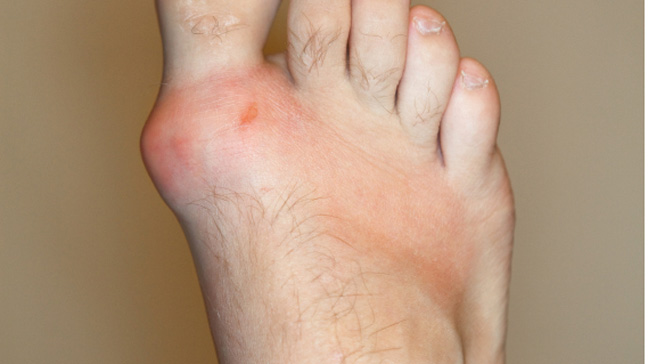It is not uncommon to miss taking drug once or twice during our continuous drug regimen. It happens rarely if the drug is prescribed once a day. But if the drug is prescribed twice or thrice a day then there is high chance that you forget to take your medication at least once especially during work hours. What we are going to discuss here is that when you missed out on a medication and remember it few hours later, can you take the drug and if you remember it during the next dosing, can you take double the dose of drug prescribed.
 |
| Can we take double of the recommended dose |
Before we could really talk about this, we should know few basic ideas on what our body does to the drug that is administered. The administered drug is processed by the body by the process which we call Pharmacokinetics. This involves
1.
Absorption – From site of administration to
plasma (Intravenous dosage doesn’t involve absorption as the drug is already
administered in plasma)
2.
Distribution – From plasma the drug is
distributed to its site of action.
3.
Metabolism- The drug is metabolized to make it
excrete out of body.
4.
Excretion- Especially via urine.
To get the answer to our question we should know about the
mechanics of elimination of drug from the body. Most of the drug follows First
order Kinetics while Aspirin, Phenytoin and Ethanol in high dose follows zero
order kinetics.
When I say first order kinetics what I mean by that is
constant fraction of drug is eliminated from body in some time. Let’s make this
clear with some real numbers. Suppose you are administered with 80 mg drug and
50% is eliminated in every 4 hours then the amount of drug in the body after 4
hours will be 40 mg. In the next 4 hour it will be 20 mg. In the next 4 hour it
will be 10 mg and so on.
80 mg--------- Initially
40 mg--------- After 4 hours
20 mg--------- After 8 hours
10 mg ---------- After 12 hours
Here we see the drug is becoming half in every 4 hours. So
we call that the half life of drug is 4 hours.
The difference in zero order kinetics is that the constant
amount (not fraction) of drug in eliminated in a specific time. Let’s give some
real number. Suppose you have 80mg drug in your body then after every 4 hours
every 10 mg (10 mg is taken as example only) is eliminated.
80 mg ------------ Initially
70 mg------------- After 4 hours
60 mg ------------ After 8 hours
50 mg-------------- After 12 hours.
In this case we can’t find out the exact time when the drug
will be half. So half life is variable.
Now after understanding the concept of half life, let’s try
to understand therapeutic index of the drug so that we can really answer our
question. For a drug to show its action in the body, it should achieve some
minimum concentration in the plasma. Below this concentration the drug doesn’t
show its effect. This is known as minimum effective concentration of the drug.
Only above this concentration, the therapeutic effect of any drug is seen. As
the concentration of drug gets higher and higher, it can reach a certain
concentration above which it start showing toxic effects. The concentration of
the drug at which it start showing toxic effect is called minimum toxic
concentration. To make a drug therapeutically beneficial our goal should be to
keep concentration of the drug steady in the plasma and at this steady
concentration, we should make sure the concentration achieved is higher than
minimum effective concentration and lower than minimum toxic concentration. The
gap or the difference between minimum effective concentration and minimum toxic
concentration determines therapeutic index of the drug. Higher the therapeutic
index, safer it is. Few drugs have very narrow therapeutic index and we should
be really conscious about drug dosing for such drugs.
After understanding the concept of first order kinetic, half
life and therapeutic index, lets try to answer our question by playing with
some numbers. Suppose you have been injected 100mcg/ml of some drug
intravenously. Let’s say this drug has minimum effective concentration 40mcg/ml
and minimum toxic concentration 230 mcg/ml. Let’s just say that the drug has a
half life of 8 hours and the drug is recommended thrice a day(every 8 hours) every day. The
example has been taken only for our simplicity sake.
Initial dosing of the drug------------------------------------------------- 100 mcg/ml
After 1st half-life (8 hours) ---------------------------------------------- 50 mcg/ml
100 mcg/ml drug re-administered after 8 hrs of initial dosing------ 150 mcg/ml
After 2nd half-life (16 hours) -------------------------------------------- 75 mcg/ml
100 mcg/ml drug re-administered after 8 hrs of second dosing
------175 mcg/ml
After 3rd half-life (24 hours)
----------------------------------------------87.5mcg/ml
100 mcg/ml re-administered after 8 hrs of 3rd
dosing------------------187.5mcg/ml
After 4th half life (32 hours) -----------------------------------------------93.75 mcg/ml
100 mcg/ml re-administered after 8 hours of 4th
dosing--------------- 193.75mcg/ml
After 5th half-life (40 hours)
------------------------------------------96.875mcg/ml
100 mcg/ml re-administered after 8 hours of 5th
dosing -------------- 196.875mcg/ml
After 6th half life (48 hours)
----------------------------------------- 98.4375
mcg/ml
100 mcg/ml re-administered after 8 hours of 6th
dosing-------------- 198.4375mcg/ml
After 7th half life (56 hours) -----------------------------------------99.21875 mcg/ml
Mathematically we can keep going down and it will take very
long to reach a steady state. But clinically what we see here is that after 4th
and 5th half life the drug concentration hasn’t changed to
significant concentration. It is around 200 mcg/ml when the drug is
administered and decreases over time till it reaches around 100 mcg/ml and at
this time we re-administer 100 mcg/ml of drug. Here we have achieved a steady
state plasma concentration in between 100 and 200 mcg/ml.
Now let’s see what happens when we miss the dosage of drug
after reaching steady state. The drug concentration we have achieved after
taking drug is 200mcg/ml. After 8 hours it decreases to 100 mcg/ml. We were
supposed to re-administer drug at this time but we forget. In this case, the
drug concentration keeps decreasing below 100 mcg/ml. In the next 8 hours
(which is the half life of drug), its concentration will be 50 mcg/ml. Luckily
in our example this is still above minimum effective concentration i.e. 40
mcg/ml. If we miss to take drug again then then the drug concentration will
further decrease below 50 mcg/ml and when it is less than 40mcg/ml, the
therapeutic effect of drug is lost.
Lets suppose this patient only miss one dose of the drug and
the concentration of drug in the plasma has decreased down from 100 mcg/ml to
50 mcg/ml. Patient is supposed to take drug now but the patient remember that
he forgets to take one dose of the drug during office and takes double the
recommended dose of drug i.e. 200 mcg/ml. Then the concentration of the drug is
the plasma reaches 250mcg/ml. This is greater than the minimum toxic effect of
the drug and the patient suffers from numerous toxic effects.
Conclusion
It is strongly recommended to follow the drug dosage and
frequency recommended by your physician. Make sure you don’t forget to take
medication in time. You can set an alarm or a reminder in your smartphone. But
in case you forget to take the drug in time and remember it an hour later or so
then take the prescribed dose of drug as soon as you remember. In case you
remember too late; let’s say you were supposed to take one dose of drug in the
morning and one dose in the evening and in the evening you realize that you
missed morning dose of drug then in this case you only take the evening dose of
the drug and take morning dose next morning. NEVER take double the recommended
dose of drug because some drug may have very narrow therapeutic index and that
can be toxic to you.
I hope this was useful.








2 Comments
I got lots of knowledge today on this topic. Waiting for next blog .
ReplyDeleteThank you for your response
DeleteNext blog will be in about a week. Stay updated by subscribing.